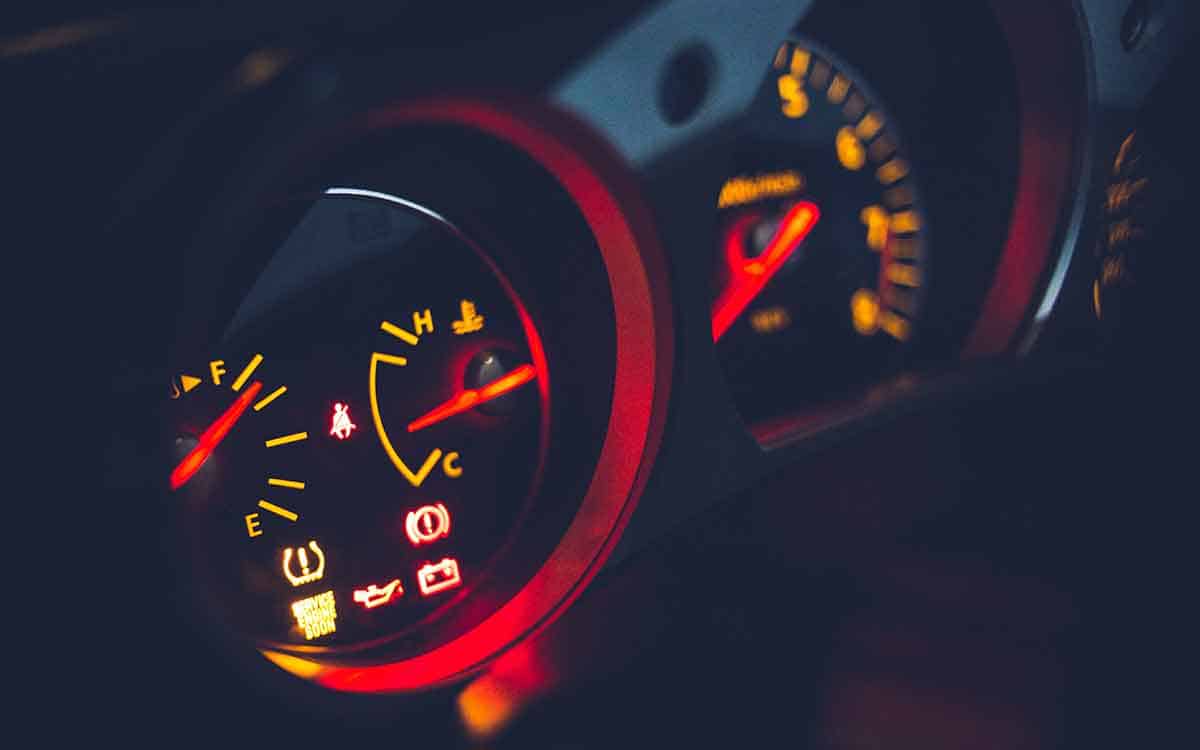If you’ve ever driven through a big puddle and your check engine light comes on, you may have wondered what was going on. It’s a scary feeling to see that light come on, especially if you’re not sure what it means.
In this article, we will explain exactly what happens when a check engine light comes on after driving through water. We’ll also provide some tips for how to deal with the situation if it happens to you.
What happens when a check engine light comes on after driving through water
You may be wondering why your check engine light would come on after driving through a puddle or pool of water. But, before you freak out, it’s important to know that this is a common occurrence and it doesn’t necessarily mean there’s something wrong with your car.
The check engine light comes on because the sensors such as splash sensors, air intake system, ignition system, exhaust system and oxygen sensors in your car have been exposed to water. When this happens, the sensor sends a signal to the car’s computer that there may be a problem.
Let’s look at these in detail:
1. Splash and Sensors
Driving through water, especially in flooded or heavy rain conditions, can lead to water splashing onto critical components of your vehicle. The check engine light is often triggered when water makes its way to sensitive sensors or electrical connections.
2. Air Intake System
Many modern vehicles have the air intake system positioned in vulnerable areas, such as low in the engine bay. If water is drawn into the air intake during the splash, it can interfere with the air-to-fuel ratio, leading to combustion issues and triggering the check engine light.
3. Ignition System Disruption
Water infiltration can disrupt the normal operation of the ignition system. This may affect the spark plugs, ignition coils, or other components, causing misfires and prompting the check engine light to illuminate.
4. Exhaust System Concerns
Water entering the exhaust system can cause rapid cooling of the catalytic converter. This extreme temperature change may lead to damage or inefficient performance, triggering the check engine light as the onboard diagnostics system detects anomalies in the exhaust system.
5. Oxygen Sensor Malfunction
Oxygen sensors play a crucial role in monitoring and regulating the air-fuel mixture. If water exposure occurs, these sensors may malfunction, leading to irregularities in the combustion process and the illumination of the check engine light.
The good news is that, in most cases, the check engine light will go off on its own after a short period of time. However, if it does not, you’ll need to take your car to a mechanic to have it checked out.
In some cases, driving through water can cause serious damage to your car. If this happens, you’ll need to take it to a mechanic as soon as possible.
Keep reading to find out how to deal with a check engine light after driving through water.
How to deal with a check engine light after driving through water
To deal with the check engine light after driving through a pool of water, follow this procedure:
1. Pullover
The first thing to do after you find yourself in this situation is to pull over immediately. This is because continued driving can cause further damage to your car such as water getting into the engine.
When water gets into the engine it causes a condition called hydro lock. This means that the pistons in the engine are unable to move due to the water.
2. Turn off your car
After you’ve pulled over, the next thing to do is turn off your car. This will help prevent any more water from getting into the system of your car. Do not attempt to drive any further as this can cause even more damage.
Once your car is turned off, you can open the hood and check for any water that may have gotten into the engine.
3. Call a tow truck
Once you’ve pulled over and turned off your car, the next step is to call a tow truck. You’ll need to have your car towed to a mechanic so they can check for any damage the water has caused and fix it if necessary. -Check your insurance policy
Before you have your car towed, it’s important to check your insurance policy. You may be covered for towing and repairs if your car is damaged after driving through water.
4. Take your car to a mechanic
Once you’ve had your car towed, the next step is to take it to a mechanic. They will be able to check for any damage and fix it if necessary.
By following these steps you will be able to deal with a check engine light after driving through water.
Have you driven through a pool of water and are scared your car might be damaged, but you don’t know how to check? Keep reading to find out how to check if the engine light is damaged after driving through water.
How to check if my car is damaged after driving through water
If you want to check if your car is damaged after driving through water, there are a few things you can do.
1. Look for water in the engine
The first thing you can do is open the hood of your car and look for any water that may have gotten into the engine because as you are well aware, the engine is not completely sealed and if you have driven through water the chances of water in the engine is high. If you see any water, it’s important to take your car to a mechanic so they can check for any damage and fix it if necessary.
2. Check for leaks
Another thing you can do is check for any leaks. To do this, park your car on a level surface and then look underneath it for any water that may be dripping. Leaks are often a sign of damage and should be fixed as soon as possible.
3. Check the oil
Another thing you can do to check for damage is to check the oil. To do this, open the hood of your car and locate the dipstick. Once you’ve found it, pull it out and wipe it off with a clean cloth. Then, insert it back into the engine and pull it out again. If the oil looks milky or there is water on the dipstick, this is a sign of damage and you should take your car to a mechanic.
4. Look for rust
Another thing to look out for after driving through water is rust. If you want to check for rust, you’ll need to look for any signs of corrosion. This can be things like Rust on the underside of your car or the exhaust system.
Because cars are made of metal, they are susceptible to rusting and if you see any signs of it, it’s important to take your car to a mechanic so they can check for any damage and fix it if necessary.
5. Listen for strange noises
If you’re driving and you hear a strange noise coming from your car, it could be a sign that something is wrong. Water can cause damage to different parts of your car and if you hear any strange noise, it’s important to take your car to a mechanic so they can check for any damage and fix it if necessary.
6. Check the brakes
The last thing you can do to check for damage after driving through water is to check the brakes. To do this, you’ll need to pump the brakes a few times to see if they feel spongy. If they do, this is a sign of damage and you should take your car to a mechanic so they can check for any damage and fix it if necessary.
These are just a few things you can do to check for damage after driving through water. If you’re ever in doubt, it’s always best to take your car to a mechanic so they can check for any damage and fix it if necessary.
Final thoughts
To end, I think it’s important to reiterate that if you ever find yourself driving through a pool of water, the best thing you can do is to take your car to a mechanic as soon as possible so they can check for any damage and fix it if as soon as possible if necessary.
I hope this article was helpful and informative! If you have any questions or thoughts, please feel free to send me an email and I would be happy to help! Thanks for reading!

